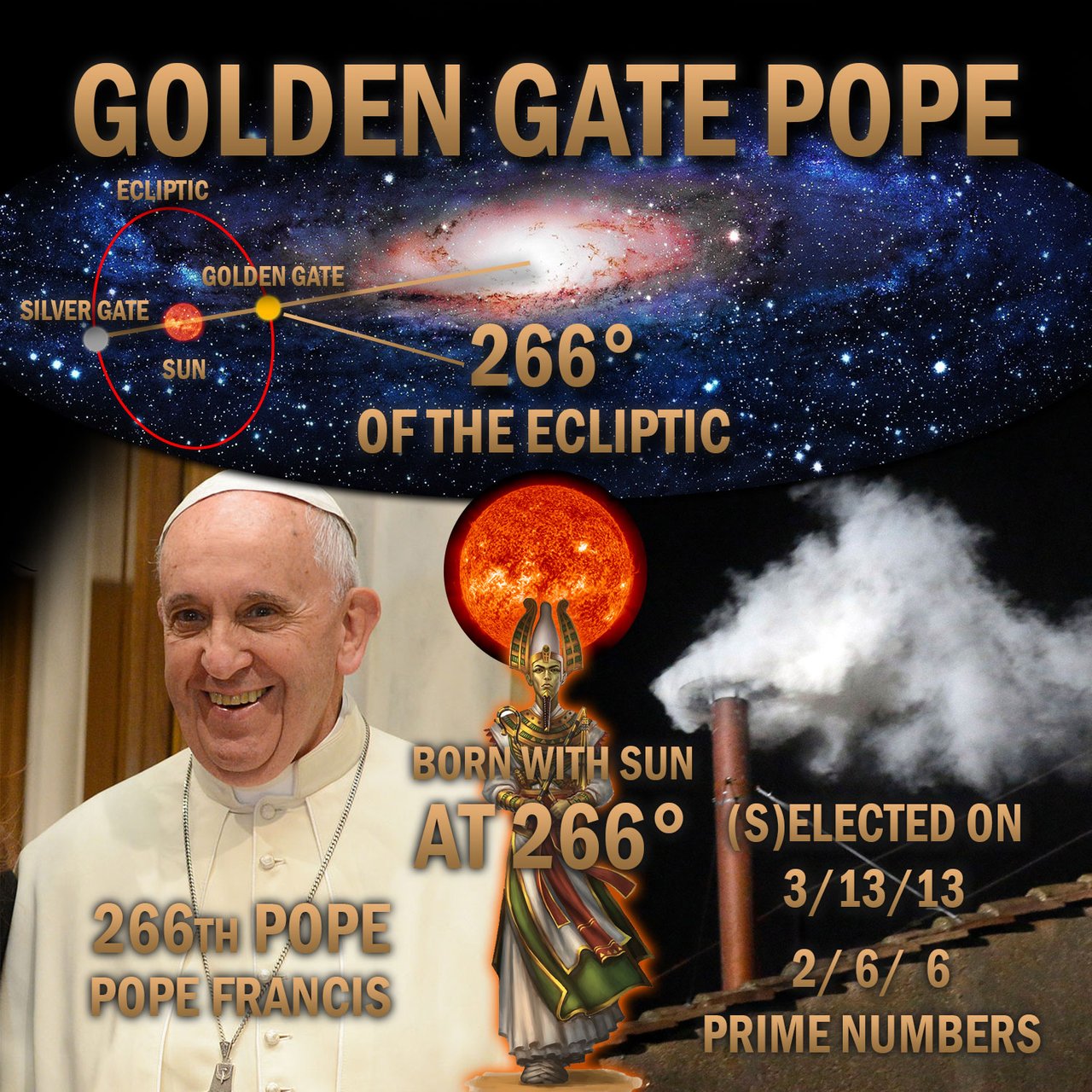|
|
General: DINERO=CAPITALISMO=MUJER=ROMA=ESPACIO/TIEMPO=FLUJO DINAMICO=TRANSFIGURACION
إختار ملف آخر للرسائل |
|
جواب |
رسائل 1 من 186 في الفقرة |
|
SARA=SERPIENTE=$=ESPACIO/TIEMPO
DINOSAURIO
DINO / DINA / DIANA / DAN (TRANSFIGURACION DE CRISTO EN EL MONTE HERMON EN LA TRIBU DE DAN)
SAURIO / SAR (PRINCIPE EN HEBREO)
LA TRANSFIGURACION DE CRISTO EN EL MONTE HERMON, CERCA DE CESAREA DE FILIPO
C-SAR ES LA CLAVE DE LA TRASLACION EN EL TIEMPO
NOTEN EL NEXO DE DAN, CON LA SERPIENTE (VENECIA) Y EL CABALLO (PLAZA SAN MARCOS)

 
Génesis 8:22 Mientras la tierra permanezca, no cesarán la sementera y la siega, el frío y el calor, el verano y el invierno, y el día y la noche. (EL MISMO DISEÑO DEL VATICANO-OCHO PUNTAS-PLAZA DE SAN PEDRO)
DINERO=MUJER=$=SARA
EL PSEUDOCRISTIANISMO LE TIENE PANICO A LA MUJER.
EN VENECIA ESTA EL SECRETO
|
Obviamente que Dios es Dios de vivos..
Puesto que en la fe nadie muere..
Y los patriarcas Abraham, Isaac, Jacob ..
Caminaron por fe..
Dios le cambio el nombre de abram a abraham..
Porque es el primer viviente según el pacto de la circuncisión..
El primer hombre de fe, el padre de naciones..
Y ese pacto de Dios con Abraham sigue vigente hasta hoy..
Porque en la fe de Abraham son salvas todas las naciones..
Y para dejar tranquilo a Barilochense le digo :
Dios también le cambió el nombre a la mujer de Abraham..
De Saraí ( princesa ) pasó a llamarse Sara que significa madre de naciones..
16. Y la bendeciré, y también te daré de ella hijo; sí, la bendeciré, y vendrá a ser madre de naciones; reyes de pueblos vendrán de ella.
Para que no diga que Dios no ama a sus hijas..
Saludos
El Ungido
LA CLAVE DEL EXPERIMENTO FILADELFIA
EN VENECIA ESTA EL SECRETO
RAMERA=$ =SERPIENTE= SABADO= SABIDURIA= LETRA S= SOPHIA=SNAKE =SERPENT
S=SERPIENTE
68. Juan 4:10 Respondió Jesús y le dijo: Si conocieras el don de Dios, y quién es el que te dice: Dame de beber; tú le pedirías, y él te daría agua VIVA.
69. Juan 4:11 La mujer le dijo: Señor, no tienes con qué sacarla, y el pozo es hondo. ¿De dónde, pues, tienes el agua VIVA?
70. Juan 7:38 El que cree en mí, como dice la Escritura, de su interior correrán ríos de agua VIVA.
|
|
|
|
|
|
 أول أول
 سابق
172 إلى 186 من 186
لاحق سابق
172 إلى 186 من 186
لاحق
 آخر
آخر

|
|
جواب |
رسائل 172 من 186 في الفقرة |
|

The James Webb telescope: part alien life detector, part time machine
In the lead-up to the launch of the James Webb telescope, we look at the scientific objectives of the most powerful space observatory ever sent into orbit.
Are we alone in the universe? What did the first galaxies formed after the Big Bang look like? How did the planets in our solar system emerge? The James Webb telescope hopes to find answers to these existential questions.
Set to launch on December 22, the James Webb is the product of the combined scientific prowess of NASA, the European Space Agency (ESA) and the Canadian Space Agency (CSA) – and by extension, Université de Montréal (UdeM). The CSA contributed a scientific instrument and a guidance sensor to the massive observatory and René Doyon, Director of UdeM’s Institute for Research on Exoplanets (iREx) and a professor in the Physics Department, is the principal investigator on the Canadian scientific team.
Together, the components supplied by the CSA, NASA and the ESA form the most complex, accurate and powerful space observatory ever built, one that promises revolutionary discoveries in astronomy.
The unparalleled power of the observatory will help scientists throughout the world scrutinize the distant reaches of the universe to learn more about the composition and inhabitability of exoplanets and study the life cycle of stars.
Exploring new worlds in search of life
The James Webb Telescope is the successor to the Hubble space telescope but is more precise and efficient because of the size of its mirror, the range of light it can detect and its location.
These attributes will enable the Webb to study the planets in our solar system and other planetary systems in unprecedented detail. Moreover, the scientific instrument developed by Doyon’s team is designed to analyze many types of celestial bodies, including the atmospheric composition of distant exoplanets.
“What we’re looking for, our holy grail, are ‘biosignatures,’ that is, signs of extraterrestrial life,” explained iREx coordinator Nathalie Ouellette, an astrophysicist who does communications for the James Webb.
She hastened to add that we shouldn’t imagine these signs of life the way they are depicted in science fiction films: “We’re talking about finding signs of biological activity or the signature of certain molecules that we have identified as essential to life, such as oxygen, water vapour, carbon dioxide, methane and ozone. Based on the presence of such molecules, particularly in certain combinations, we may be able to determine that conditions are conducive to the development of life when we explore an exoplanet using the telescope.”
Casting light on the dawn of the universe
Telescopes are also time machines of a sort. “Looking into space is like looking into the past,” said Ouellette. “Light waves travel so fast that, to the naked eye, they seem to flash instantly from one point to another. In space, however, the distances are so vast that the time it takes light to travel is perceptible.”
That makes the Webb a marvellous time machine. It will be able to see back in time to 200 million years after the Big Bang, something that has never been done before. “With the Hubble, we could go to 500 million years after the Big Bang, so now we’re going 300 million years further,” noted Ouellette. “That’s remarkable, considering that the beginning of the universe was a tumultuous period. Galaxies were colliding and stars were forming at a rapid pace.”
“Tell me where you come from and I’ll tell you who you are”
The Webb will thus improve our understanding of the development of the first luminous objects (galaxies) over time. Ouellette believes the telescope will also provide insight into the creation of our own solar system.
“We still have many questions about the origins of life in our solar system. We don’t know exactly how we came to be on Earth and how the planets were formed,” Ouellette pointed out. “By studying other systems, stars and planets at various stages of development, we hope to be able to trace our own history and understand ourselves better.”
That is the ultimate goal of the James Webb: to revolutionize our understanding of the universe and, above all, to place the Earth, in all its fragility and uniqueness, in a broader context.
https://nouvelles.umontreal.ca/en/article/2021/12/09/the-james-webb-telescope-part-alien-life-detector-part-time-machine/
|
|
|
|
جواب |
رسائل 173 من 186 في الفقرة |
|
|
|
|
جواب |
رسائل 174 من 186 في الفقرة |
|
|
|
|
جواب |
رسائل 175 من 186 في الفقرة |
|
|
|
|
جواب |
رسائل 176 من 186 في الفقرة |
|
|
|
|
جواب |
رسائل 177 من 186 في الفقرة |
|
|
|
|
جواب |
رسائل 178 من 186 في الفقرة |
|
|
|
|
جواب |
رسائل 179 من 186 في الفقرة |
|
Does space "flow" like a river? There's an analogy in General Relativity ... Why The Theory of Relativity Doesn't Add Up (In Einstein's Own Words).
|
|
|
|
جواب |
رسائل 180 من 186 في الفقرة |
|
|
|
|
جواب |
رسائل 181 من 186 في الفقرة |
|
|
|
|
جواب |
رسائل 182 من 186 في الفقرة |
|
|
|
|
جواب |
رسائل 183 من 186 في الفقرة |
|
|
|
|
جواب |
رسائل 184 من 186 في الفقرة |
|
|
|
|
جواب |
رسائل 185 من 186 في الفقرة |
|

The letter S is the 19th letter of the Latin alphabet and the English alphabet. It is also used in other Western European languages and other Latin alphabets.
   
POPE NUMBER 266
9 LUNAR MONTHS=266 DAYS
FR-ANC-ISCO / J-ANUK-A
1/1-23/9 GREGORIAN CALENDAR=266 DAYS
266 DAYS=19*2*7 DAYS (SATURDAY)=WOMAN IN PREGNANT=LUNAR PHASE (36=4*9) (1+2+3+4+...36=666)
10/3-30/11 (JANUKAH=JOHN 10 22=24/9-KISLEV HAGGAI 2 10 )=266 DAYS
10 On the twenty-fourth day of the ninth month, in the second year of Darius, the word of the Lord came by Haggai the prophet, 11 “Thus says the Lord of hosts: Ask the priests about the law: 12 ‘If someone carries holy meat in the fold of his garment and touches with his fold bread or stew or wine or oil or any kind of food, does it become holy?’” The priests answered and said, “No.” 13 Then Haggai said, “If someone who is unclean by contact with a dead body touches any of these, does it become unclean?” The priests answered and said, “It does become unclean.” 14 Then Haggai answered and said, “So is it with this people, and with this nation before me, declares the Lord, and so with every work of their hands. And what they offer there is unclean. 15 Now then, consider from this day onward. Before stone was placed upon stone in the temple of the Lord, 16 how did you fare? When one came to a heap of twenty measures, there were but ten. When one came to the wine vat to draw fifty measures, there were but twenty. 17 I struck you and all the products of your toil with blight and with mildew and with hail, yet you did not turn to me, declares the Lord. 18 Consider from this day onward, from the twenty-fourth day of the ninth month. Since the day that the foundation of the Lord's temple was laid, consider: 19 Is the seed yet in the barn? Indeed, the vine, the fig tree, the pomegranate, and the olive tree have yielded nothing. But from this day on I will bless you.”


|
|
|
|
جواب |
رسائل 186 من 186 في الفقرة |
|
https://www.facebook.com/photo/?fbid=599481086886534&set=a.300527260115253
|
|
|
 أول أول
 سابق
172 a 186 de 186
لاحق سابق
172 a 186 de 186
لاحق
 آخر
آخر

|
|
| |
|
|
©2025 - Gabitos - كل الحقوق محفوظة | |
|
|

